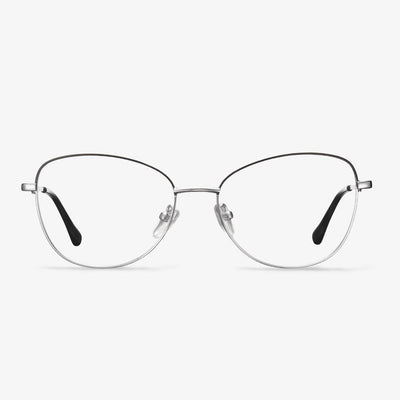The classification is different.
Acetate frames can be divided into two kinds, one of which is the lens using acetate fiber processing of plate cutting. The other is the injection frame. It uses acetate fiber particles. Acrylic acid is a kind of unsaturated organic acid, which can be derived from a series of compounds to form a large class of acrylic products. Acrylic acid downstream products contain common acrylate and special acrylate. It has the characteristics of heat resistance, weather resistance, aging resistance, strong adhesion, water resistance, acid and alkali resistance, stickiness resistance, and environmental friendliness.
Types of Varifocal Lenses
Elite varifocal lens: it has the widest field of vision at all focal points and is tailor-made to your exact vision and customized to fit within your frames. With the least distortion around the edges, they are very easy to adapt to and will give you the clearest level of vision available.
Occupational varifocal lenses: the last varifocal lens we want to mention is the occupational varifocal lenses. They are specific to different lifestyles, hobbies or occupation vision needs. If you frequently perform tasks at a particular distance for a long period of time, then you have a broader, more comfortable zone of vision.
Figure out the categories of driving glasses
Driving glasses are usually divided into daily and night glasses. Daily use refers to the glasses with anti-glare function and darker colors like gray, brown and gray-green, and other colors. Daily lens transmittance is over 8%. Night type usually refers to the glasses that can prevent glare from headlights of opposite vehicles and increase brightness at the same time. That is, it can prevent lights and not block the road, and can brighten and increase the visual scope. Night lenses have a transmittance of more than 75%.
What Are Progressive Lenses?
Progressive lenses have grown in popularity and are one of the most common solutions to treat vision loss that occurs with age or presbyopia. This eye condition occurs when the eye loses some of its flexibility and ability to adjust to clear seeing objects at different distances. Presbyopia often occurs among adults who are over age 40 and is very easy to correct with a proper and prompt diagnosis.
Progressive lenses are often used to correct this eye condition. Progressive lenses are a modern alternative to bifocal glasses, which provides two prescriptions in a single set of glasses. Bifocal glasses are a better solution than carrying around multiple pairs of glasses. Progressive lenses were developed to resolve some of those common issues and to provide better aesthetics. Progressive lenses provide a smooth transition and can accommodate up to three prescriptions and are a replacement for both bifocals and trifocals.
Why are titanium glasses expensive?
One reason is that the current titanium raw material cost is too high. The other reason is that the production of titanium frames is very complex. The production of titanium glasses requires special processing equipment, special welding technology, and electroplating technology, and many difficult and different processes, so it has a high production cost.
With the emergence of new titanium glasses production equipment and the improvement of production and processing technology in the industry, the price of titanium glasses will become lower and be available to a wider range of people.
How to choose frames?
You can choose a thicker frame with the lens, and then pay attention to the temple. It is better to have a little weight, or the frame is easy to lose forward. The shape of the frame can be elliptical. If the frame is rectangular, the rim of the lens may be a little thick. Choose frame TR90 plate and the frame will be wider than ordinary alloy. Of course, if you like metal, there are now metal frames with thick frames.
Problems you may encounter when wearing your glasses.
The glasses are too tight. They clamp to the temple. Glasses slip easily. Too long or too short at the bend, and there are too small contact areas of the nose pad. Glasses are too far from the eye, and the lenses are crooked or asymmetrical. These are some of the problems you may encounter when wearing glasses.


















































